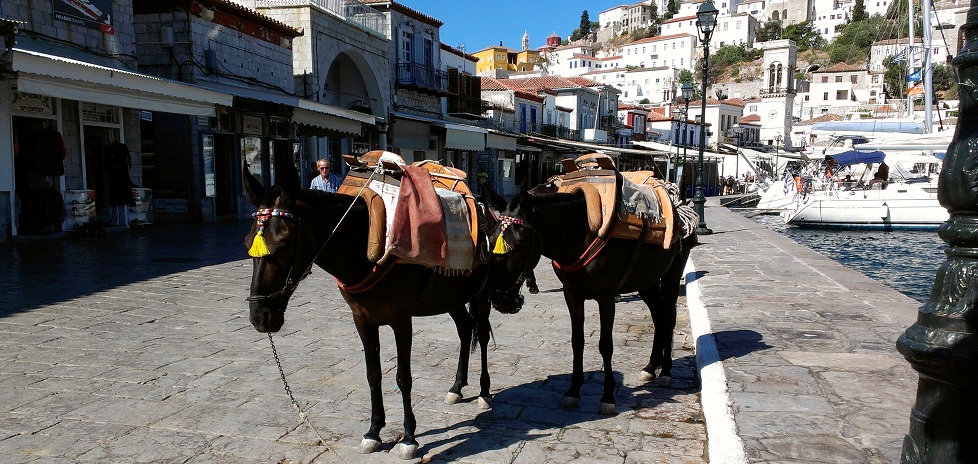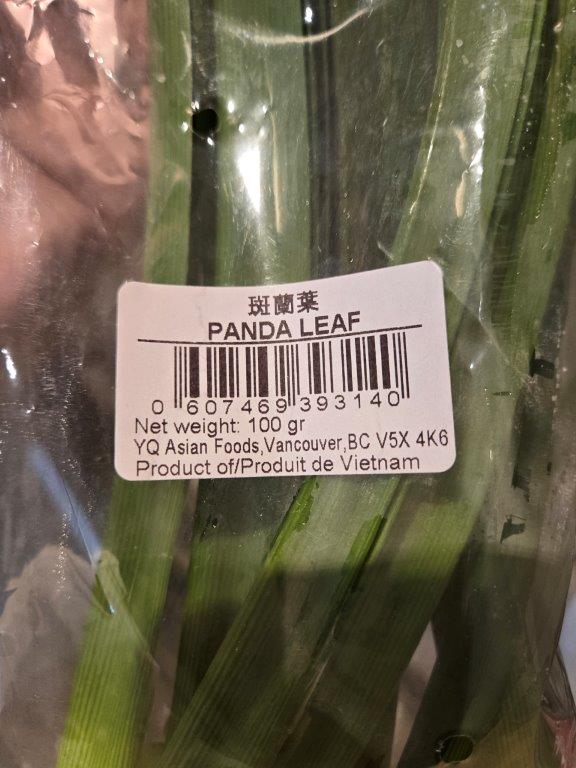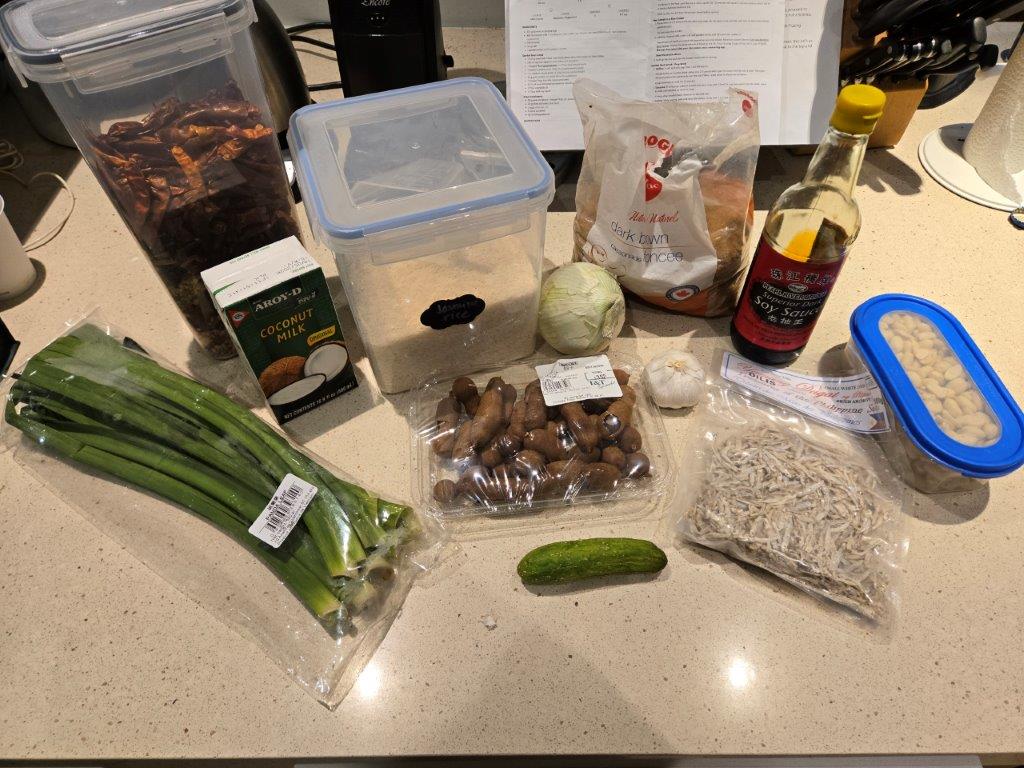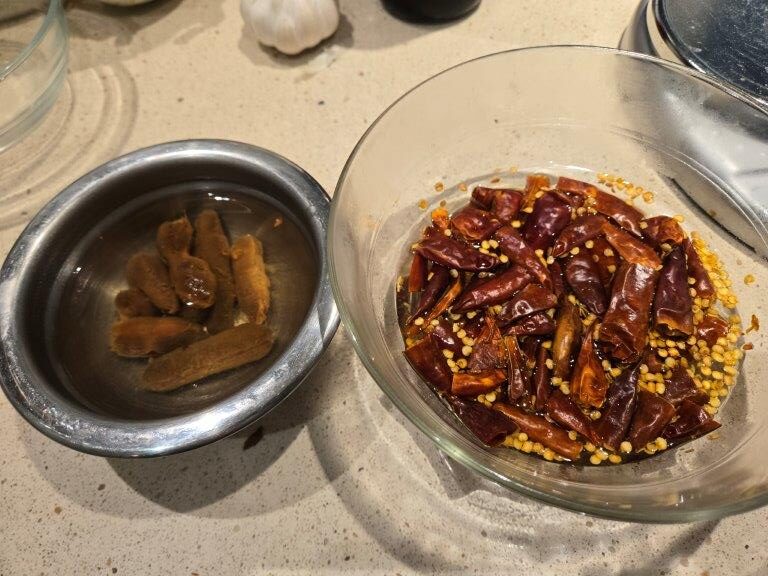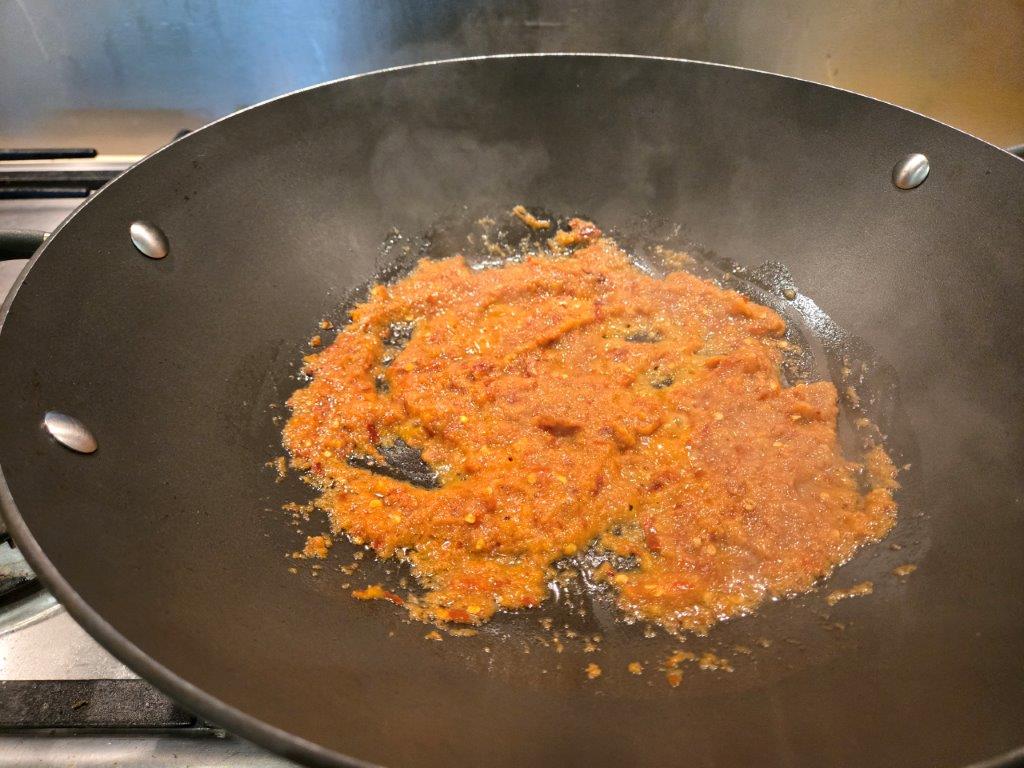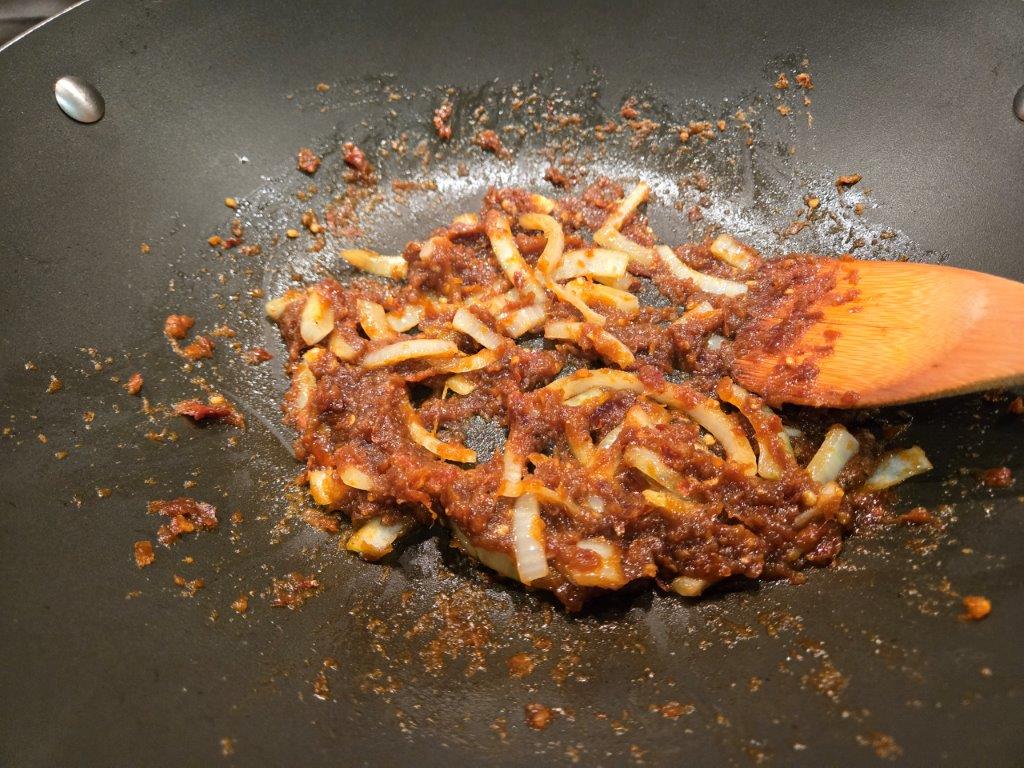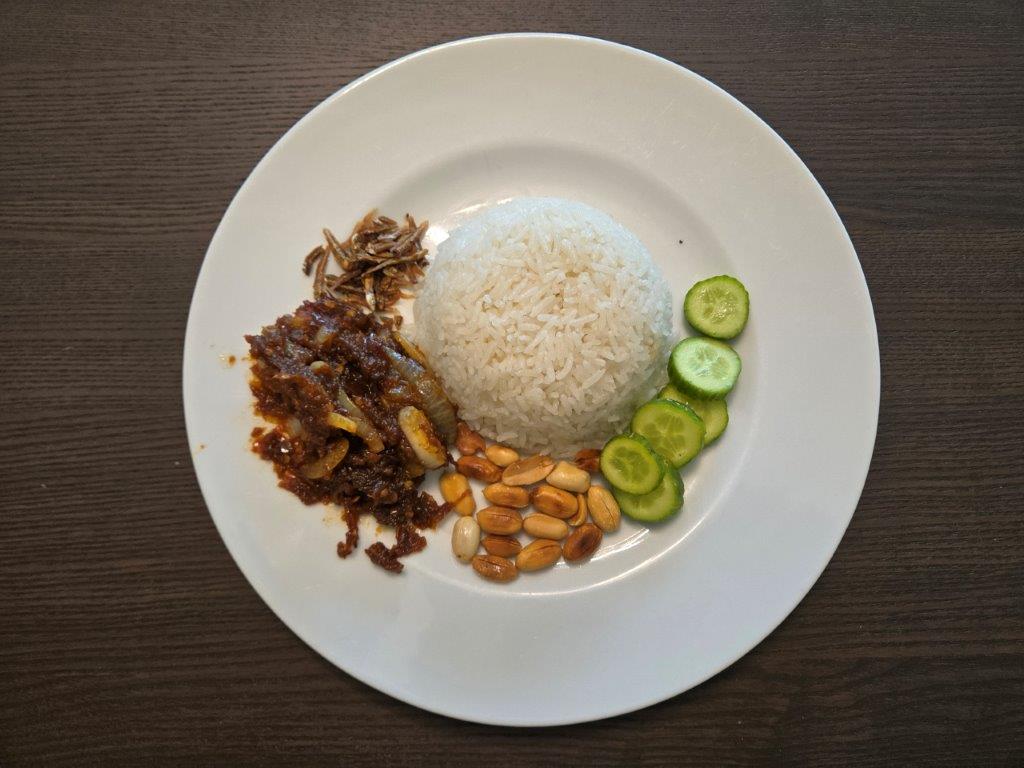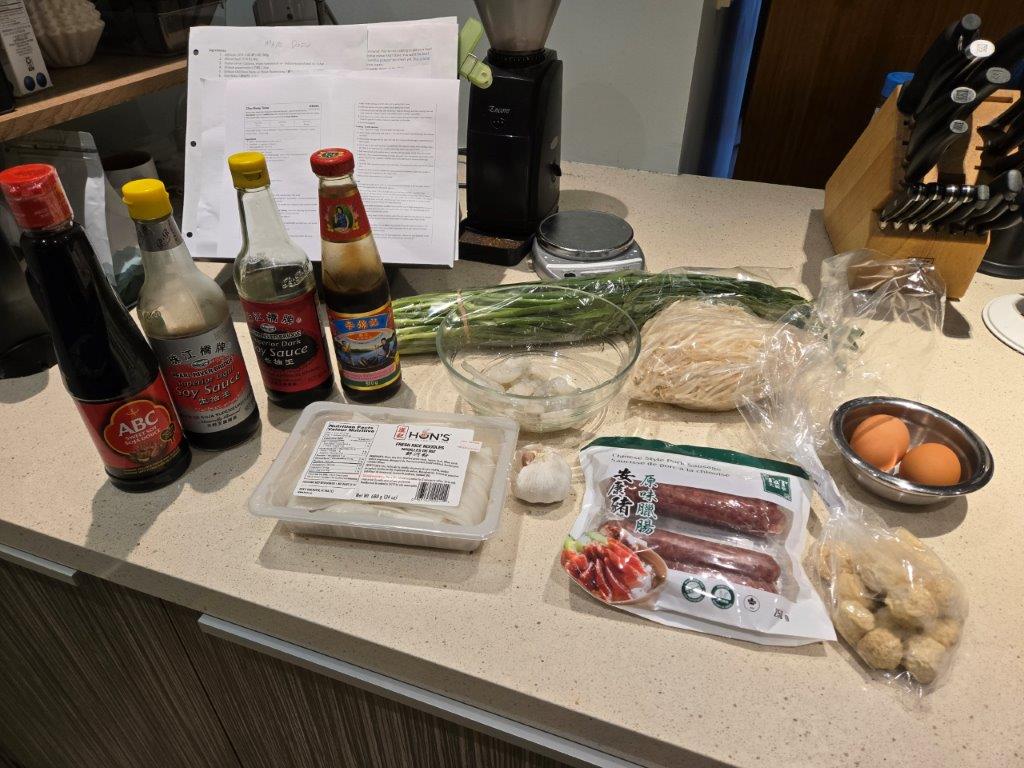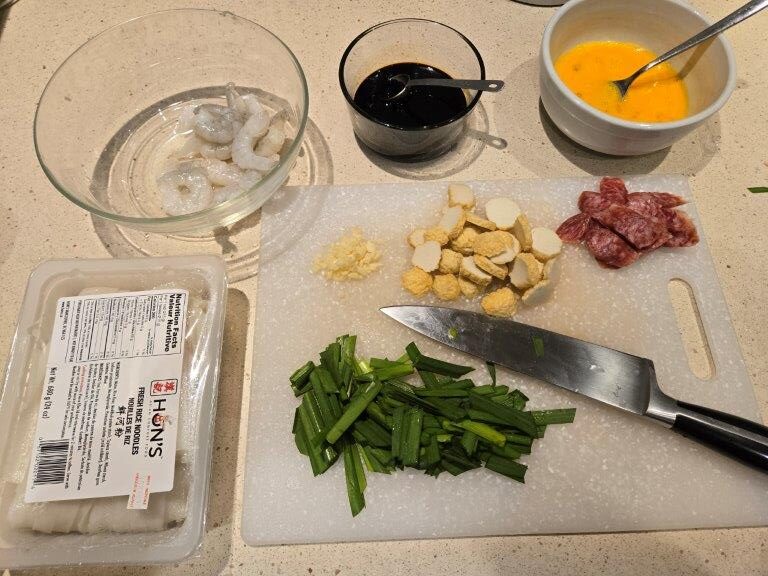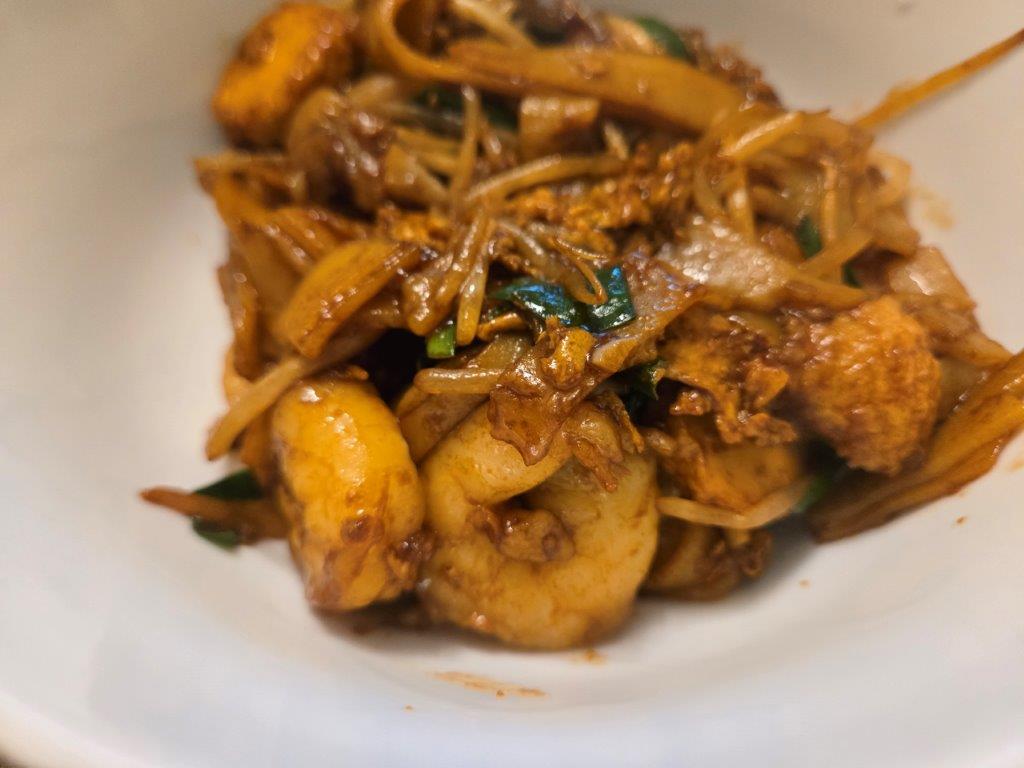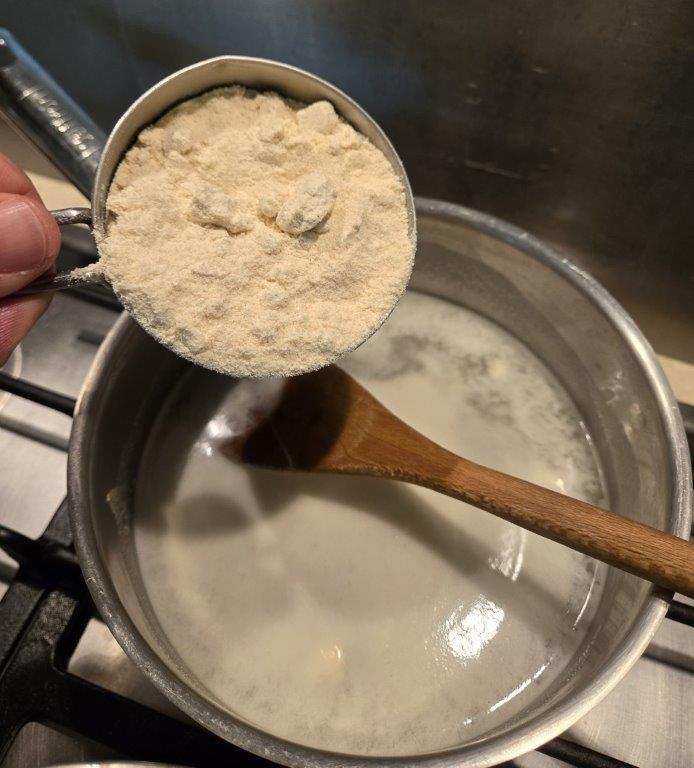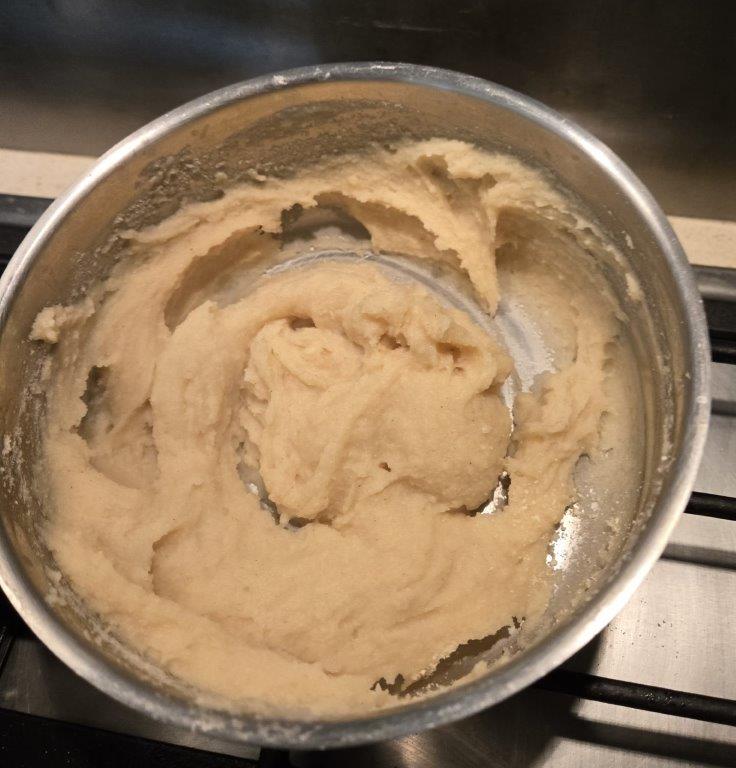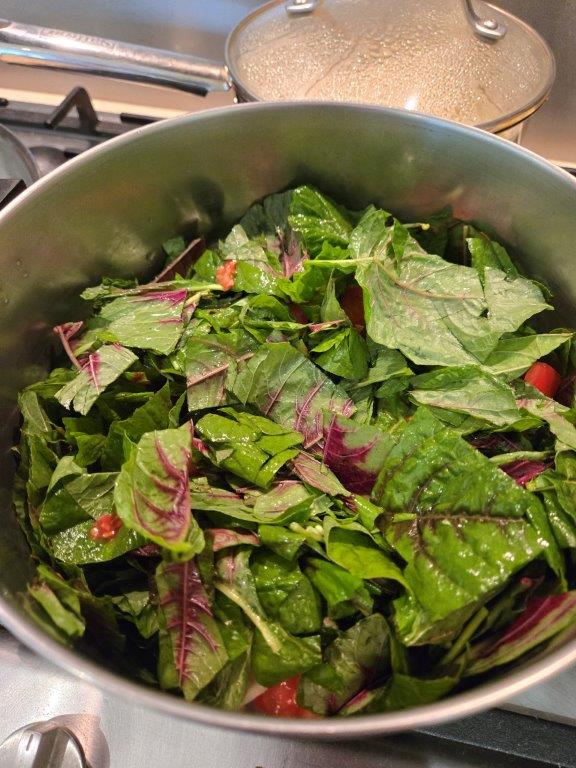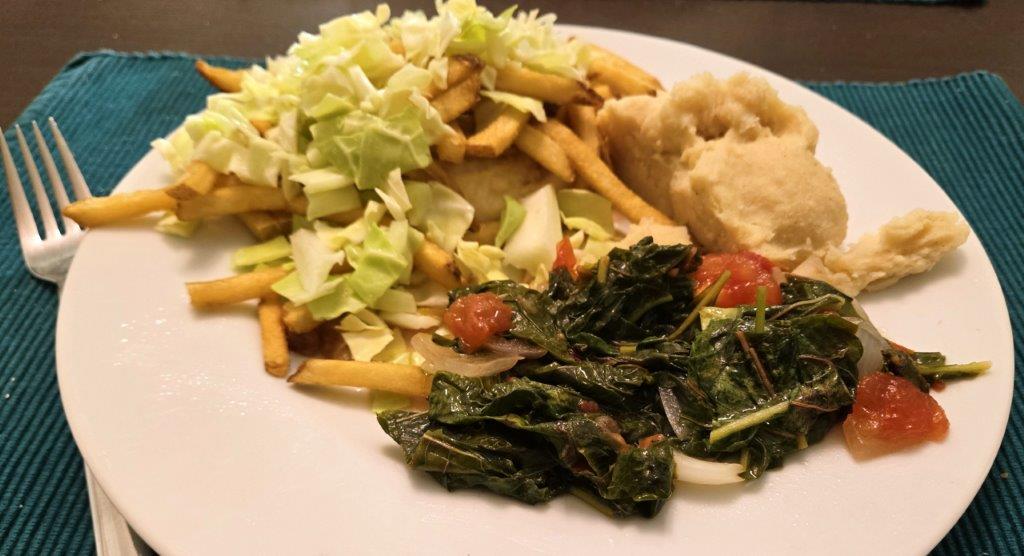We have had generally good luck with southeast Asian food so far. Cambodia, Laos, East Timor, and our three Indonesian meals were all bangers. (I mean “very good,” not “British sausages” here.) We were less happy with Brunei, but I think that’s more down to skill and ingredients than it is to any inherent flaw with the cuisine.
But seriously – if you’re looking for some great food ideas, go check out any of those entries and give them a shot.
So we were excited for Malaysia. We picked out two dishes to make, since that’s not too much work to do all at once, right?
Fortunately, we came to our senses and decided to make one for lunch and the other for dinner, since it was Victoria day. (Yay, Canada!)
For lunch, we decided to go with a strong candidate for the national dish of Malaysia – nasi lemak, which literally means “rich rice.” It’s rice cooked in coconut milk, flavoured (yay, Canada!) with a panda leaf.
Wait, what?
Typos aside, that is a pandan leaf, which has a lovely sweet fragrance, and flavours the rice beautifully. All we had to do was toss the rice, leaf, and coconut milk into the rice cooker and press “go.” This is easy – why did we decide not to do both dishes at once, again?
Just like building an IKEA bookshelf, there appear to be a few ingredients left over here. What’s going on?
Well, nasi lemak isn’t just about the rice – it’s also about the accompaniments. Most important is the sambal, which is one of those generic words like “salsa” or “curry” that has to be narrowed down a bit.
The sambal we’re making here involves first soaking some chilies and tamarind.
Sorry, did I say “some” chilies? I meant “many”. Many, many.
Once those are softened up, they get tossed in a blender with onions, garlic, and tiny, tiny anchovies, which we last encountered in our first Indonesian meal. After a quick blitz, the paste gets fried for a solid twenty minutes, until the oil separates.
Here’s what it looked like at the start of cooking:
And twenty minutes later, at which point we also added dark soy sauce and the tamarind.
In addition to the sambal, we also fried some peanuts and more of the anchovies, and sliced up a cucumber. This may be some of the best presentation we’ve accomplished on here.
Are we ready to be world famous food bloggers yet? Or even famous world food bloggers? I mean, no, of course we aren’t. But that’s still a great picture. And you know what else is great?
Nasi Lemak, that’s what. The rice was delicious all by itself, but paired with the variety of flavours and textures from all the accompaniments it was an absolutely amazing meal.
OK – what’s for dinner?
A street food dish called Char Kway Teow, which literally means “stir fried flat rice noodles.” It consists of the titular ingredient blasted in the hottest wok you can arrange with a dark sauce that caramelizes onto the noodles. This thing goes FAST, so all you’re getting pictures of is the ingredient list, followed by the dish – there was absolutely no time for photography while the cooking was happening.
Here’s our ingredient family photo:
Note the three different kinds of soy sauce plus oyster sauce. That’s going to make the dark, sweet sauce that will provide the base of the flavour here. Also pictured, Chinese chives, shrimp, rice noodles, garlic, Chinese sausage, fish balls (snerk.), eggs, and bean sprouts.
From that, our mise en place:
Ready, set, BAKE! er… I mean STIR FRY!
Oh yeah – that’s the stuff. Actual cooking time was something like 90 seconds, but we were super busy the whole time. And as you can see – the result was pretty exciting. Trust us, it tasted as good as it looks. The sweet savoury salty sauce stuck to all of the other ingredients beautifully. I’m getting hungry again just looking at this.
Malaysia was fantastic. Rather than getting too worked up about Queen Victoria, let’s be happy that one of the countries her empire oppressed has REALLY amazing food.
Next up, the Maldives!
Recipes:
Nasi Lemak
Char Kway Teow
